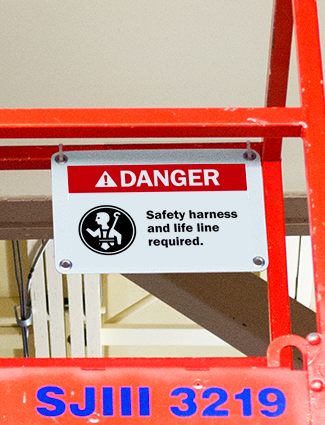ANSI Raising Bar on Powered Access Standard
03
February,
2023
2 MINUTE READ

Working at heights is risky even on powerful man-moving machines. In 2016, at a height of 60 feet, a mobile elevated work platform (MEWP) lost stability, then tipped over. The worker on the platform was ejected and landed on a concrete driveway, which caused fatal injuries. The International Powered Access Federation (IPAF) is working with governing agencies in Canada and the United States to improve operator and worker safety by aligning standards for powered access equipment and promoting safe best practices.
Standards Update
Already one year in, the Canadian Standards Association updated its recommended training and operation protocol for aerial work platforms (CSA B354.8) in May. In the United States, the American National Standards Institute says it is set to publish its new standard, ANSI A92 (safe use and training), in September. Once the standard is published, industries will have 12 months to comply. These updates focus on training requirements for the use, operation, inspection, testing, and maintenance of MEWPs. The ANSI update will also help manufacturers of the MEWPs to be in line with the International Organization of Standardization.
In the 2016 MEWP tip-over incident, safety controls that were set in place had been tampered with and safety methods to help support the machine, such as lock-out wedges, were not in use. The machine was also not on a stable, even surface, which contributed to the tip-over. On average, each year there are more than 60 deaths involving boom or vertical mobile elevating work platforms, according to the IPAF. The main causes are falls from heights, electrocution, entrapment, and overturn of machinery.
"It is disappointing to see the same main causes of fatalities being repeated year on year, which suggests that the industry as a whole is not learning the lessons from previous incidents," said Chris Wraith, IPAF's safety and technical executive. However, IPAF points out that MEWPs still provide a safer way to work at heights.
Meet Requirements

Improvements to safety with MEWPs can be made through continuous safety education and visual communication. A worker who interacts with MEWPs in any way is subject to new training standards. Safety managers and equipment operators can take steps to avoid hazards in working with MEWPs by planning ahead for safety on the ground before work begins at a heights. Understand the laws, regulations, safe-use practices, manufacturers' requirements, and recognizing and avoiding hazards as they relate to MEWPs. Planning, risk-assessment, selecting right equipment, and promoting safety best practices for MEWPs.
To successfully meet the requirements of ANSI's new standards on MEWPs, it is important for managers to prepare plans ahead of time. Start with a risk-assessment. Evaluate what is being done properly and consider what improvements can be made through a job hazard analysis. Include a pre-use inspection that looks over safety control methods, including safety signs and labels. Take into consideration the environment and equipment that will be in use. Post reminders of safe work weight limits, PPE and fall protection information, and to keep a distance from unstable surfaces. Communicate workplace safety plans that also include what to do in an emergency. Use robust training methods to ensure workers know what is expected when working with MEWPs. Discourage improper behavior but reassessing operator control training that is compliant.
RELATED RESOURCES

Harwood Grant Deadline Soon
Nonprofits have until July 20 to submit applications for a piece of $11.5 million in grant funding from the ...
Read
Biggest OSHA Sign Compliance Challenges
When it comes to signs in the workplace, opinions vary on why they are necessary and if they even work. One ...
Read
4 Signs Your Safety Communication Needs an Update
Safety signs and labels that are up to date, clearly worded, and in tact play a key role in achieving ...
Read.png)


